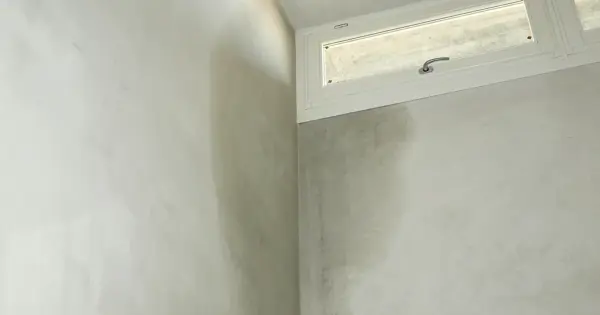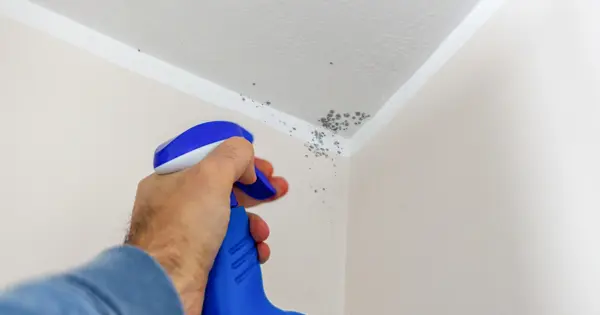
What is condensation?

What is damp?

What is mould?
Excess condensation or structural damp issues can cause sitting water on surfaces
like ceilings, walls and floors. This can lead to damage in your home, such as flaking paintwork, peeling wallpaper or black mould. Black mould can grow on any surface, but common places include windowsills, ceilings or walls. If you notice mould forming, it’s important that it’s treated straight away as it can spread quickly and be harmful to your health.
Using a clean cloth and a white vinegar spray is an effective way to treat and remove small areas of mould.
Our promise to you
Report it
- We’ll make it easy for you to report any condensation, damp and mould concerns, log into MyAccount, and report a repair.
- We’ll get to the bottom of it quickly, help to put things right and carry out any repairs.
- If you have a severe case of damp and mould, we’ll prioritise this as urgent and send our specialist response team to your home to carry out repairs and start to put things right.
Our process
- Once we’ve received your repair request, we’ll arrange for our specialist response team to come out to your home and complete a mould wash within 15 working days.
- We’ll never leave you alone to manage condensation, damp and mould.
- We will guide you with some helpful hints and tips to prevent damp and mould appearing in your home.
Next steps
- Our specialist damp and mould team will reach out to you after six months of your initial mould wash to see if your original reported mould growth has returned.
- Should it be that your original report of condensation, damp and mould hasn't been resolved from your mould wash, we will arrange for a diagnostic survey, along with an additional mould wash to be completed.
- Once we've completed a diagnostic survey, any repairs, and an additional mould wash, and should you still notice signs of mould from your original report, we will carry out a detailed survey and provide preventive support.
- We may be able to provide you with smart technology to help you better understand how your home is performing – and reduce the chance of future cases of damp and mould.
- If any you notice any new mould growth in a different area, please let us know as soon as possible, by reporting a new repair on MyAccount, where a new mould wash will be completed.
Further assistance
Finding the root cause of the damp and mould can be difficult and might take a little longer that we’d like. But don’t worry we'll find what’s causing it and sort it out as quickly as we can.
- Set your heating to a low temperature to come on for longer periods of time, as spikes in temperature from very cold to very warm could create the conditions for condensation to develop.
- When you’re cooking or take a bath/shower make sure that you have your extractor fans turned on and keep any bathroom or kitchen doors closed.
- If you notice any signs of water on your windows, wipe them away to avoid any mould growth.
- Mainly first thing in the morning, open your windows and let some fresh air into your home, and let that moist air escape.
- When you’re drying your washing, try to hang them outside, where you can. If you don’t have anywhere outside then dry your clothes in your bathroom or kitchen with your extractor fan on, windows open and the doors closed.
- Try and keep any furniture away from your radiators and external walls, as this can stop any air moving around your home.
- When you’re cooking keep any lids on your pans to stop any steam escaping.
- If you are using a tumble dryer, make sure you have it ventilated outside.
- If you notice any mould, use any mould cleaning products that you can from main high street shops or supermarkets and remove the mould.
If you’re struggling to pay your energy bills, speak to your energy provider to find out about any help that’s available. Or you can reach out to our Money Advice team to see what cost of living advice is available.
